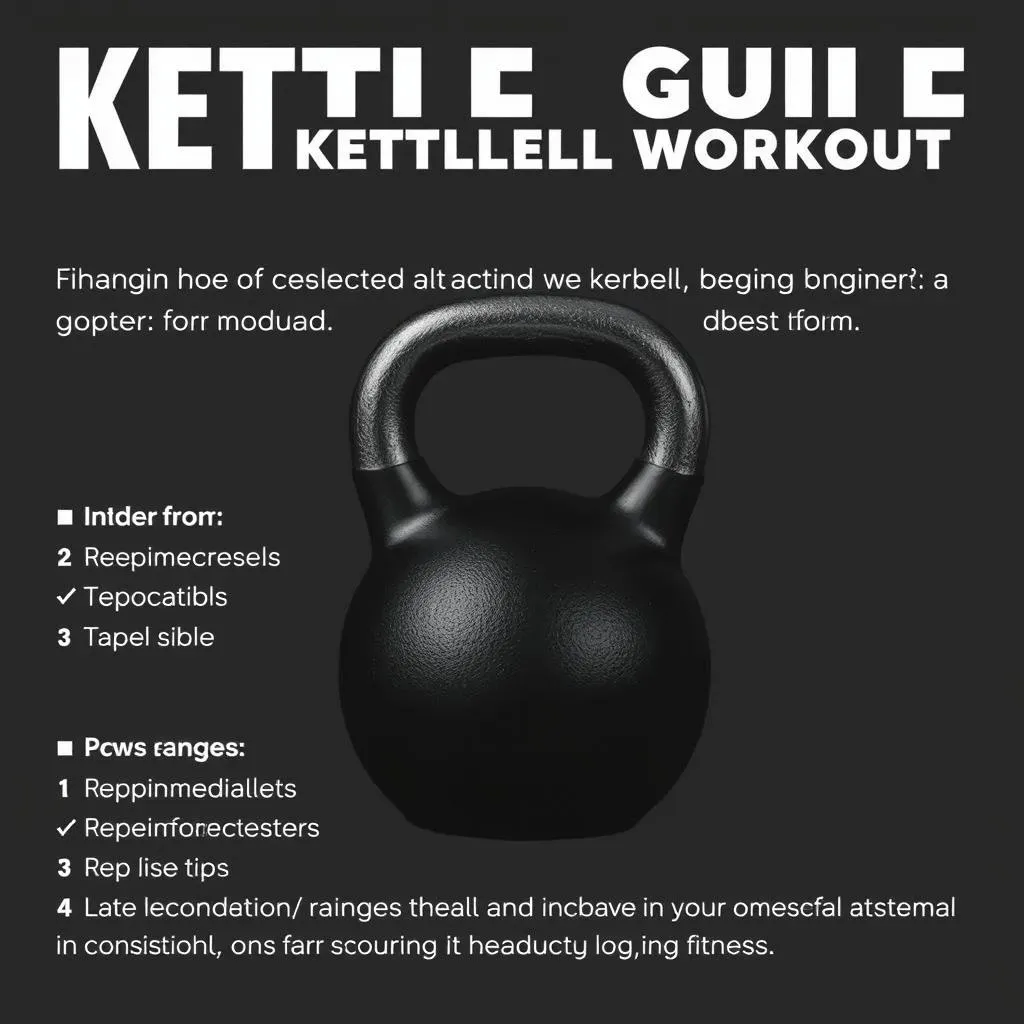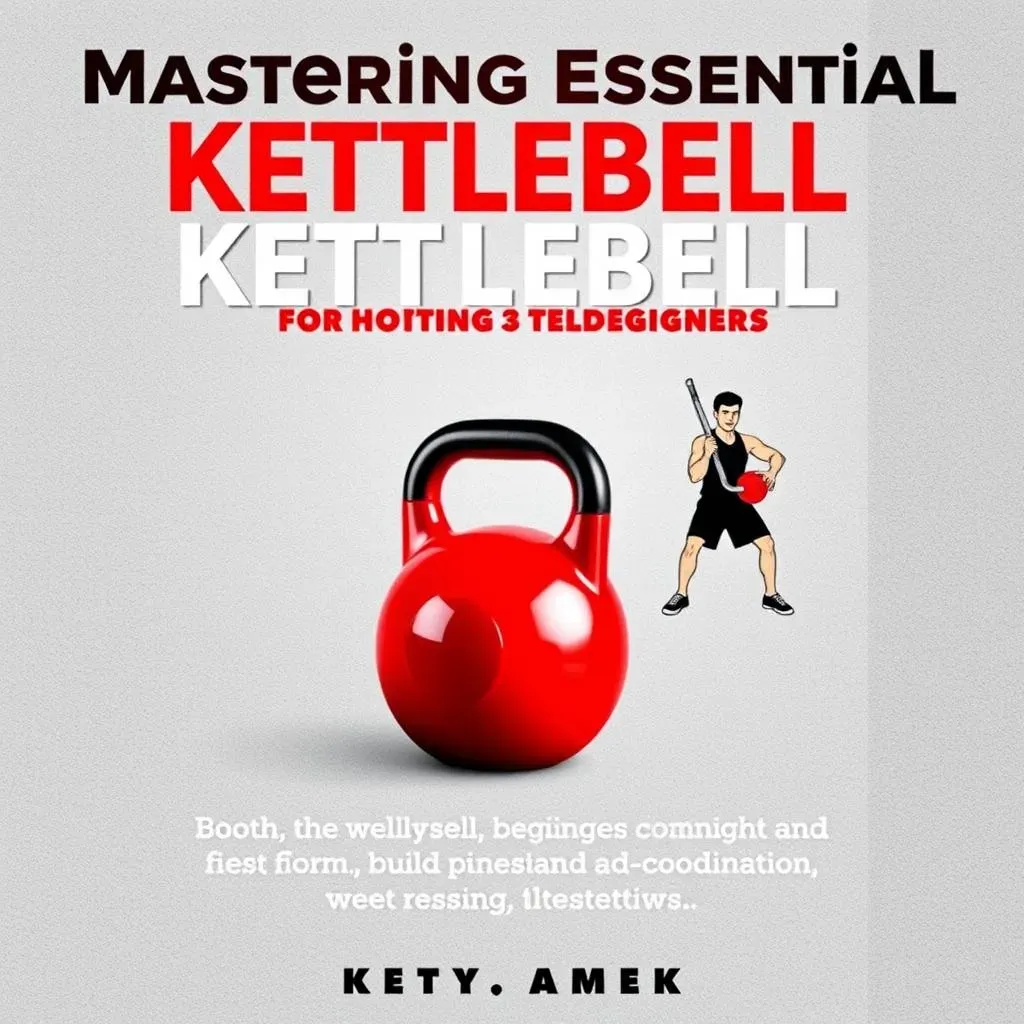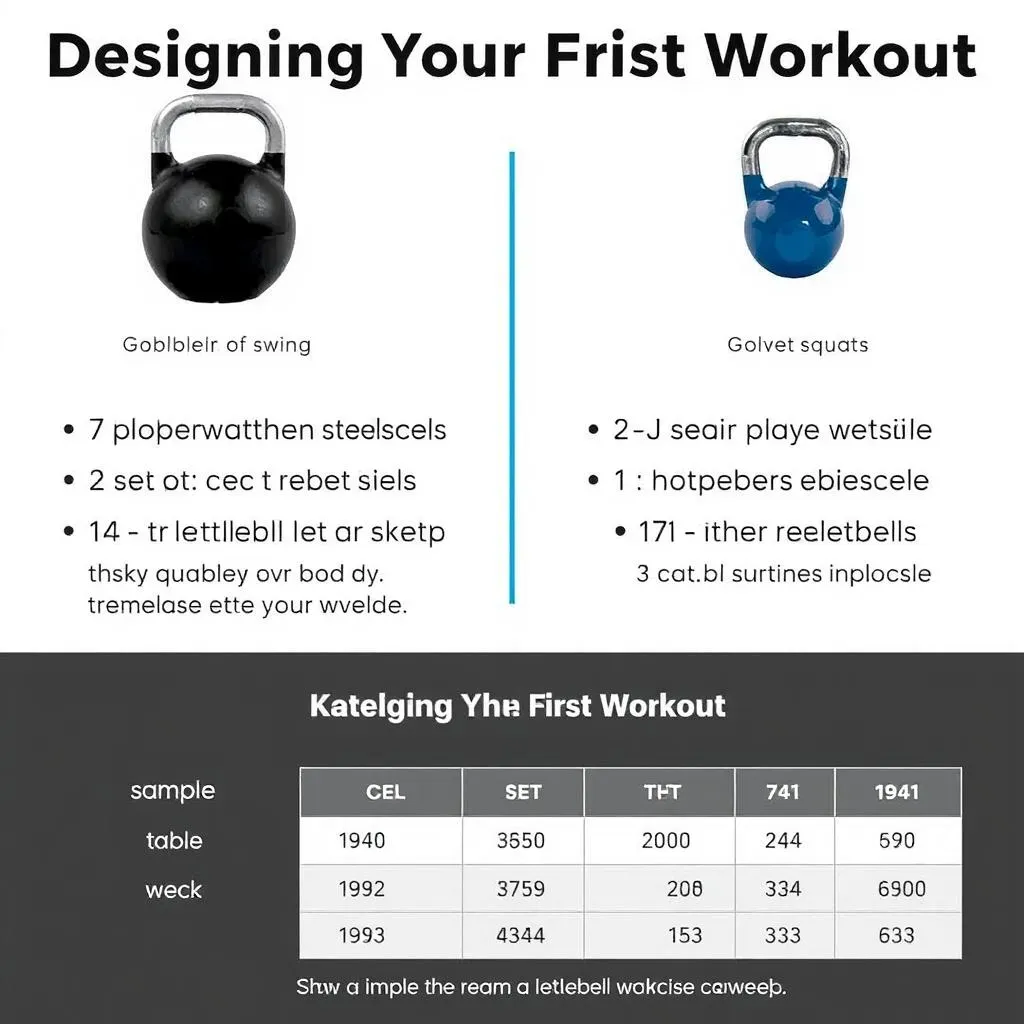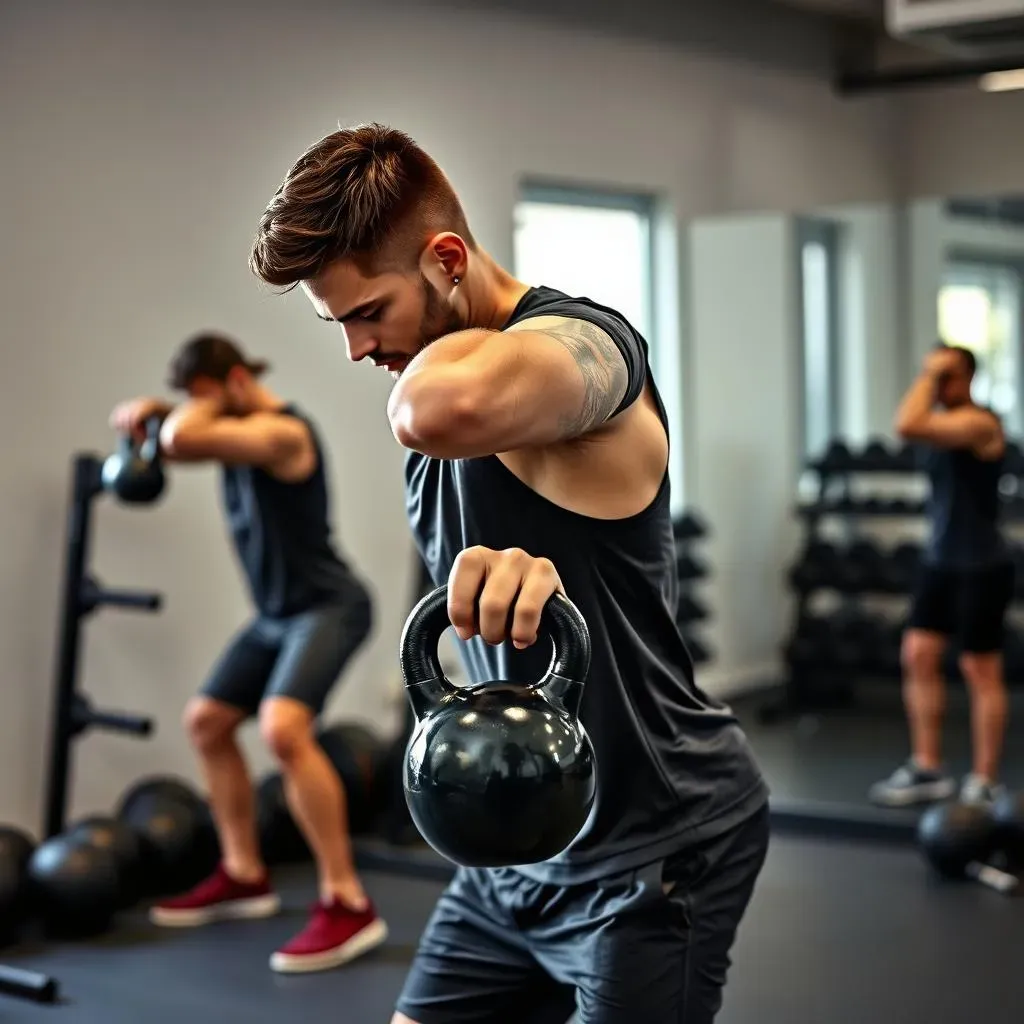Table of Contents
Ready to unlock a world of strength and fitness? This comprehensive guide to the kettlebell beginner program will empower you to achieve your fitness goals safely and effectively. Forget confusing jargon and overwhelming routines; we'll break down everything you need to know to get started with kettlebells, from choosing the right weight and mastering fundamental exercises to creating a personalized workout plan. We’ll cover essential kettlebell movements, ensuring you develop proper form to prevent injuries and maximize results. This kettlebell beginner program isn't just about lifting weights; it's about building a strong foundation for a lifetime of fitness. We'll guide you through building your first workout routine and provide a roadmap for safe and consistent progress. Whether you’re a complete beginner or have some experience with other forms of exercise, this kettlebell beginner program is designed to help you build strength, improve endurance, and feel fantastic. Let's embark on this exciting fitness journey together! Prepare to be amazed by what you can achieve with a kettlebell and a well-structured plan. Get ready to transform your body and your fitness routine with our beginner-friendly kettlebell program.
Getting Started with Your Kettlebell Beginner Program

Getting Started with Your Kettlebell Beginner Program
So, you're ready to dive into the world of kettlebells? Awesome! Before you grab that kettlebell and start swinging, let's lay a solid foundation. First things first: choosing the right kettlebell. Don't worry about getting the heaviest one you can lift; start with a lighter weight that allows you to maintain perfect form throughout your exercises. A good rule of thumb is to choose a weight that allows you to complete 10-15 repetitions of each exercise with good technique. Remember, form is far more important than lifting heavy weight, especially when you're starting. A beginner kettlebell workout should focus on building a strong base, not on immediate strength gains.
Kettlebell Weight (kg) | Recommended for |
|---|---|
4-6 | Most women, beginners |
8-12 | Many men, intermediate |
16+ | Advanced users |
Next, find a comfortable and safe space to work out. You'll need enough room to move freely without bumping into anything. A clear floor space is ideal. Consider adding a mat for extra comfort and grip. Now, let's talk about what you should wear. Comfortable, breathable clothing that allows for a full range of motion is key. Avoid anything too loose or restrictive. Supportive athletic shoes will also make a big difference in your comfort and stability. Check out this kettlebell routine for women beginners for more tips.
Before jumping into a full workout, it's vital to learn the proper technique for each exercise. Poor form can lead to injuries, so take your time and master the basics first. There are tons of free resources online, including videos and articles, that can guide you. Many gyms also offer kettlebell classes, which is a fantastic way to learn from experienced instructors and receive personalized feedback. Remember, consistency is crucial. Even short, regular workouts are more effective than infrequent, intense sessions. This ultimate beginner routine is a great place to start.
- Watch instructional videos
- Start with lighter weights
- Focus on proper form
- Be patient and consistent
Mastering Essential Kettlebell Exercises for Beginners

Mastering Essential Kettlebell Exercises for Beginners
Let's tackle some foundational kettlebell moves! We'll start with the kettlebell swing, a fantastic full-body exercise that builds strength and improves cardiovascular fitness. Focus on hinging at your hips, keeping your back straight, and using your legs to power the swing. Don't worry about swinging high at first; concentrate on controlled movements and perfect form. Check out this beginner kettlebell workout for a detailed video guide.
- Hip Hinge
- Controlled Swing
- Maintain Straight Back
Next up is the goblet squat. Holding the kettlebell close to your chest, squat down as if sitting in a chair. Keep your back straight and chest up. This exercise strengthens your legs and glutes while improving your overall balance and stability. Remember to go as low as you comfortably can while maintaining good form. For a more intense workout, try adding a full body kettlebell workout for beginners.
Exercise | Muscles Worked |
|---|---|
Kettlebell Swing | Glutes, Hamstrings, Core |
Goblet Squat | Quads, Glutes, Hamstrings |
The Turkish get-up is a more advanced exercise, but it's worth mastering as it's a fantastic full-body movement that challenges your strength, balance, and coordination. It involves a series of controlled movements from a lying position to a standing position while holding the kettlebell. Start slowly and focus on mastering each step before progressing to the next. Take a look at this beginner kettlebell workout for a step-by-step guide.
Finally, let's not forget about the kettlebell press, a great exercise for building upper body strength. You can perform this exercise either seated or standing, focusing on controlled movements and maintaining a stable core. Remember to avoid locking out your elbows completely to protect your joints. Try incorporating these moves into your beginners kettlebell workout routine.
- Turkish Get-Up
- Kettlebell Press
- Controlled Movements
Building Your First Kettlebell Beginner Workout Routine

Building Your First Kettlebell Beginner Workout Routine
Designing Your First Workout
Now for the fun part: creating your first kettlebell workout! Remember, we're building a foundation, so start small and focus on quality over quantity. A great beginner routine involves 2-3 sets of 10-15 repetitions for each exercise. Don't push yourself too hard, especially in the beginning. Listen to your body and rest when needed. A good workout schedule is 2-3 sessions per week with rest days in between to allow your muscles to recover. This beginner full body workout is a great starting point.
- Choose 2-3 exercises
- 2-3 sets of 10-15 reps each
- Rest days between workouts
- Listen to your body
Sample Beginner Routine
Let's craft a sample routine. For your first workout, try a combination of kettlebell swings and goblet squats. Start with 2 sets of 10 swings, followed by 2 sets of 10 goblet squats. Rest for 60 seconds between sets. As you get stronger, you can gradually increase the number of sets and repetitions, or add more challenging exercises. This kettlebell workout for women offers a slightly modified approach.
Week | Workout |
|---|---|
1 | Kettlebell Swings (2 sets of 10), Goblet Squats (2 sets of 10) |
2 | Kettlebell Swings (2 sets of 12), Goblet Squats (2 sets of 12) |
3 | Kettlebell Swings (3 sets of 12), Goblet Squats (3 sets of 12) |
Kettlebell Beginner Program: Progressing Safely and Effectively

Kettlebell Beginner Program: Progressing Safely and Effectively
Gradual Progression is Key
So you've nailed the basics? Fantastic! Now it's time to think about how to keep progressing safely and effectively with your kettlebell beginner program. The key here is gradual progression. Don't jump into heavier weights or more challenging exercises too quickly. Instead, focus on consistently improving your form and gradually increasing the number of sets and repetitions you do each week. Remember, it's better to do fewer reps with perfect form than many reps with sloppy form. This will help to prevent injuries and maximize your results. A good rule of thumb is to increase the weight or difficulty by about 5-10% each week. This allows your body to adapt gradually and reduces the risk of setbacks. For example, if you are currently doing 2 sets of 10 repetitions, you might increase to 2 sets of 11 or 12 next week. This approach is far more sustainable and will lead to faster long-term progress. Check out this beginner kettlebell workout for more tips on smart progression.
- Increase reps gradually
- Add sets slowly
- Increase weight incrementally
- Prioritize perfect form
Listen to Your Body and Rest
One of the most important aspects of any fitness program, and especially a kettlebell beginner program, is listening to your body. Pay attention to how you feel during and after your workouts. If you experience any pain, stop immediately. Don't push through pain; it's a sign that something isn't right. Rest is also crucial for muscle recovery and growth. Make sure you're getting enough sleep and allow for rest days between your workouts. Aim for at least one full rest day per week, and consider adding extra rest days if needed. Your muscles need time to recover and rebuild after each session. Ignoring this can lead to overtraining, injuries, and a plateau in your progress. Don't forget that a balanced diet plays an important role in supporting your fitness goals. A good diet will fuel your workouts and aid in recovery. Need a plan? Check out this kettlebell workout for women for a balanced approach.
Day | Workout | Rest |
|---|---|---|
Monday | Kettlebell Workout | Rest |
Tuesday | Rest | Active Recovery (light walk, stretching) |
Wednesday | Kettlebell Workout | Rest |
Thursday | Rest | Active Recovery (light walk, stretching) |
Friday | Kettlebell Workout | Rest |
Saturday | Rest | Rest |
Sunday | Rest | Rest |